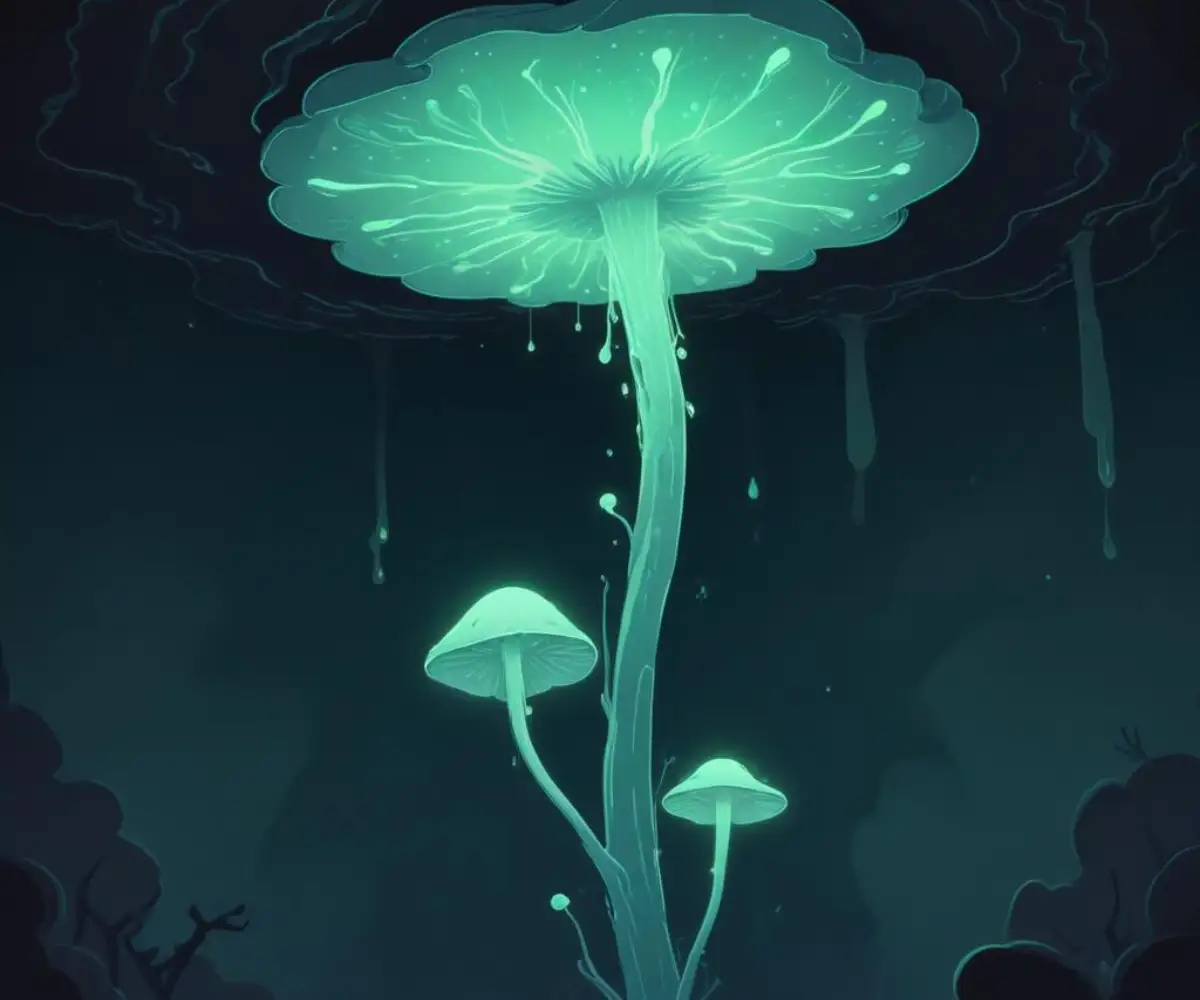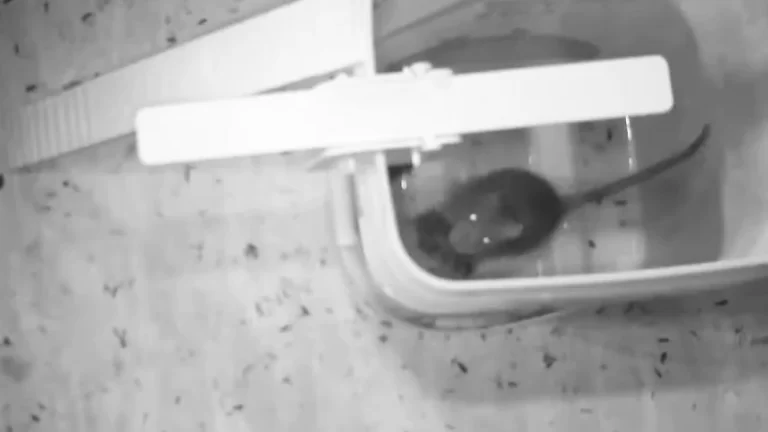Luminescent Mold on Ceiling? The Unseen Danger Behind the Glow
You turn off the lights, ready for sleep, and notice something strange. A faint, eerie green glow emanates from a patch on your ceiling. Your first thought might be some bizarre, luminescent mold on ceiling, a notion that is both fascinating and deeply unsettling.
While your eyes aren’t deceiving you, what you’re likely seeing isn’t mold at all. That ghostly light is a powerful warning sign from your home, signaling a hidden danger that requires immediate attention. This glow is a symptom of a much larger problem lurking behind your drywall.
You'll Learn About
What is That Eerie Glow? Unmasking Luminescent Ceiling Growths
The mystery of a glowing patch on a ceiling is often misattributed to mold. Understanding the true culprit is the first step toward solving the underlying issue. The reality is a fascinating biological phenomenon that has unfortunately taken root inside your house.
Is it Actually Mold? The Bioluminescent Fungus Misconception
Contrary to popular belief, common household molds do not produce their own light. While some molds can fluoresce, or glow, under a UV blacklight, they do not naturally emit a visible light in the dark. If you see a persistent, faint glow without any special lighting, you are almost certainly dealing with something else entirely.
The source of this light is likely a type of bioluminescent fungus. There are over 70 known species of fungi that can produce light through a chemical reaction, similar to how fireflies glow. This natural illumination is often called “foxfire” or “faerie fire.”
“Foxfire”: Nature’s Intruder in Your Home
Foxfire is the term for the ghostly green light emitted by certain species of wood-decaying fungi. Common culprits found in homes include species from the Armillaria (Honey Mushroom) genus or Panellus stipticus (Bitter Oyster). These organisms thrive on damp, decaying wood.
When you see this glow on your ceiling, it means the fungus has established a colony within the wooden structures of your home, such as the ceiling joists or the wood-based paper backing of your drywall. The fungus is actively consuming the wood, and the glow is a byproduct of its metabolic process. For this to happen, three conditions must be met: the presence of fungal spores, a food source (wood or cellulose), and most importantly, persistent moisture.

Why is This Happening? Pinpointing the Root Cause
The appearance of bioluminescent fungi is not a random occurrence. It is a definitive indicator of a significant and ongoing water problem that has compromised your home’s structure. The beautiful but alarming glow is your house sending you a distress signal.
The Prime Suspect: Hidden Water Leaks
The number one cause of wood-decaying fungus in a ceiling is a hidden water leak. Water is the key ingredient that activates dormant fungal spores and allows them to flourish. The source of this water can be notoriously difficult to pinpoint.
Common culprits include slow roof leaks, compromised flashing around chimneys or vents, failing plumbing in an upstairs bathroom, or a leaking HVAC unit in the attic. Even a small, steady drip can create the perfect damp environment for foxfire to develop over time, silently eating away at your home’s framework.
Humidity and Poor Ventilation: A Breeding Ground for Fungus
Leaks are not the only source of moisture. Chronically high humidity and poor ventilation can also lead to condensation buildup, creating a sufficiently damp environment for fungus to grow. Areas like bathrooms, kitchens, and laundry rooms are particularly susceptible.
If steam from hot showers or cooking has nowhere to go, it will condense on cooler surfaces like the ceiling. Over time, this trapped moisture can saturate the drywall and wood joists, providing an ideal habitat for bioluminescent fungi and other dangerous molds.
Is Luminescent Fungus Dangerous? Health and Structural Risks
While the otherworldly glow of foxfire might seem harmless, it points to conditions that pose serious risks to both your health and your home’s structural integrity. The fungus itself is just the messenger; the real danger lies in what its presence implies.
Assessing the Health Concerns
The good news is that most bioluminescent fungi themselves are not considered highly toxic to humans. However, their presence is a massive red flag because the very same damp conditions that allow foxfire to grow are also perfect for hazardous molds like Stachybotrys chartarum (black mold).
These other molds can release mycotoxins into the air, leading to a host of health issues. Symptoms can include persistent allergies, respiratory problems, headaches, and eye irritation. Therefore, while the glowing fungus isn’t the primary health threat, it signals a contaminated environment that can make you sick.
The Silent Threat: Structural Damage to Your Home
The most immediate danger posed by foxfire is to your house itself. Bioluminescent fungi are white-rot fungi, meaning they specialize in breaking down lignin, the rigid structural polymer in wood. As the fungus feeds on your ceiling joists and roof trusses, it causes the wood to become soft, spongy, and structurally unsound.
Left unaddressed, this decay can lead to catastrophic failure, including ceiling collapse. Before considering projects like figuring out if you should install floating shelves before or after backsplash, you must first guarantee the structural soundness of your walls and ceilings.
Your Step-by-Step Action Plan to Eliminate the Glow for Good
Addressing luminescent fungus requires a methodical approach. Simply cleaning the visible spot is not enough; you must eradicate the fungus at its source and eliminate the moisture that allows it to live. This process involves safety precautions, moisture control, material removal, and thorough cleaning.
Step 1: Safety First – Gear Up and Assess
Before you begin, protect yourself from inhaling fungal spores and other harmful microbes. Always wear personal protective equipment (PPE), including an N95 respirator mask, safety goggles, and gloves. Cordon off the area with plastic sheeting to prevent spores from spreading to other parts of your home.
Step 2: Stop the Moisture Source – The Critical First Move
This is the most important step. You must find and fix the source of the water. Inspect your attic for signs of a roof leak, check plumbing lines for drips, and ensure your HVAC unit’s condensation line is clear. Without stopping the flow of water, any cleanup effort will be temporary, and the fungus will inevitably return.
Step 3: Remove the Contaminated Materials
Unfortunately, surface cleaning will not solve this problem. The fungal network, or mycelium, extends deep into the porous materials of your ceiling. You must cut out and remove all affected drywall, insulation, and any visibly rotted or contaminated wood. Be generous in your removal, cutting at least a foot beyond the visible growth to ensure you get all of it.
Step 4: Clean and Treat the Area
Once the contaminated materials are removed, the remaining structural elements must be thoroughly cleaned and treated. Use a wire brush to scrub the surface of the exposed joists and surrounding drywall. Then, apply a fungicide to kill any remaining spores and prevent regrowth. For long-term protection of the wood, a borate-based wood preservative is an excellent choice.
| Cleaning Solution | Effectiveness | Best For | Safety Precautions |
|---|---|---|---|
| Commercial Fungicide | High | Killing active fungal growth and spores on structural wood and non-porous surfaces. | Requires full PPE (respirator, gloves, goggles) and excellent ventilation. Follow manufacturer’s instructions precisely. |
| Undiluted White Vinegar | Moderate | Surface cleaning on less-porous materials. Can kill many types of mold and fungus spores. | Generally safe, but eye protection is recommended. Do not mix with bleach. |
| Borate Wood Preservative | Excellent (Prevention) | Treating clean, dry wood after fungal removal to prevent future growth. It soaks into the wood for long-term protection. | Requires gloves and eye protection. Apply to raw, unpainted wood for best absorption. |
| 10% Bleach Solution | Low (on porous surfaces) | Sanitizing hard, non-porous surfaces. Not effective for killing fungus within wood or drywall. | Requires excellent ventilation and full PPE. Can damage materials and produce toxic fumes if mixed with other cleaners. |
The Aftermath: Repair and Prevention
After you have successfully removed the fungus and solved the moisture issue, the final phase is to repair the damage and implement strategies to ensure it never happens again. This will protect your home and your peace of mind for years to come.
Rebuilding and Restoring Your Ceiling
With the area clean and dry, you can begin the restoration process. This involves replacing any removed insulation, installing new drywall, and then taping, mudding, and painting to match the rest of your ceiling. Ensuring a proper repair is essential for the aesthetic and value of your home.
Once the ceiling is secure, you can turn your attention to other details. You might consider how trim, like quarter-round on carpet, can complete the look of a renovated room. A properly sealed home envelope is also crucial for moisture control; if you notice window condensation, it might be time to research where to buy IGU replacement units to boost insulation.
Long-Term Prevention Strategies
Prevention is the best strategy against fungal growth. Maintain a humidity level between 30-50% in your home using dehumidifiers. Ensure bathrooms and kitchens have powerful, functioning exhaust fans that are vented to the outside. Regularly inspect your roof, attic, and plumbing for any signs of leaks or water intrusion. A vigilant approach can stop a major problem before it starts.
When to Call a Professional: Knowing Your Limits
While a very small area of surface mold can sometimes be a DIY project, dealing with bioluminescent fungus is a different story. Because it signifies deep-seated moisture and wood decay, it is often best handled by professionals.
You should immediately call for professional help if the affected area is larger than 10 square feet, if you suspect structural damage, or if members of your household have compromised immune systems or respiratory conditions. A certified mold remediation specialist can safely contain and remove the contamination, while a structural engineer may be needed to assess and repair any damage to your home’s framework.
The Takeaway: Don’t Just Clean the Glow, Cure the Cause
That strange glow on your ceiling is more than a curiosity; it’s a critical warning. It tells a story of hidden water damage that is actively threatening the health of your home and family. By understanding that this light comes not from mold, but from wood-destroying fungus, you can appreciate the seriousness of the situation.
Address the root cause—the moisture—with determination. Act quickly to remove the decay and restore the integrity of your home. By taking decisive action, you can extinguish the glow for good and ensure your home remains a safe, sound, and healthy environment.

